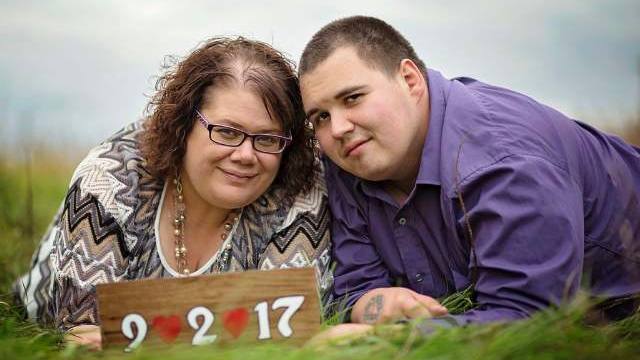
Epilepsy is one of the most common neurologic conditions, affecting about 3 million Americans. Two-thirds of patients get some relief from medications.
"But that leaves a third or roughly a million people with epilepsy who, despite taking medicine – say, twice a day, every day – continue to have seizures," says Dr. Gregory Worrell, a Mayo Clinic neurologist.
"I tried numerous medications that weren't working," says Chris White, who's lived with epilepsy since birth. "There's a constant fear of what's going to happen today."
For White, relief came in the form of high-tech brain stimulation that was developed and approved for treating conditions such as chronic pain and Parkinson's disease.
The result was a remarkable transformation.
"My life has changed 180 degrees," White says with a smile on his face. "I've been able to become employed full time, with benefits. I'm able to be anywhere. I can think of having a family."
Watch: Epilepsy patient married and seizure-free after new treatment at Mayo Clinic
Journalists: Broadcast-quality video pkg (2:51) is in the downloads. Read the script.
White says he is counting new blessings these days. Among these blessings is his new wife, Tina.
"She's amazing," he says. "You know, full of life, always there, you know, caring, outgoing. Just phenomenal."
Getting married – even close relationships – were something White thought may never be possible.
"I had a stroke when I was born, and, as a result of that, I developed epilepsy," he says.
"Chris was having multiple seizures a week," says Dr. Worrell. "But, even if it's one seizure a month or one seizure every couple of months, it still is very impactful on how people live their lives."
"You can't drive," says Dr. Matt Stead, a Mayo Clinic pediatric neurologist. "You can't swim alone. You can't bathe alone. And people don't – they fear having seizures at work, things like that."
"It feels like you never know what's going to happen if you're even going to be able to maybe leave the house," White says.
Dr. Jamie Van Gompel, a Mayo Clinic neurosurgeon, says most epilepsy patients respond well to medications for controlling their seizures.
"They affect how electricity runs around the brain. And, obviously, epilepsy is a form of bad electricity in the brain," he says.
Dr. Worrell says there are roughly 30 medications currently available for epilepsy patients.
Unfortunately, none worked for White. So a team of specialists at Mayo Clinic looked for other solutions to help him.
"Well, for medically refractory epilepsy, the standard of care is brain resection, and it still is," Dr. Stead says.
Resection means cutting out the area of the brain where the seizures originate.
"By putting electrodes directly in the brain, we identified where his seizures were coming from," Dr. Worrell says.
"And it took a long time to figure out exactly where the seizure was coming from," Dr. Van Gompel says. "And it turns out it was coming from an area just below speech in the insula."
"So, while it may alleviate the seizures, the patient would be left with speech problems or motor problems, or visual problems, language problems – those kinds of things," Dr. Stead says.
Since removing the source of the erratic electrical signals was too risky, the Mayo Clinic team decided to try to suppress them with continuous mild brain stimulation of another kind.
"We continuously deliver relatively low-amplitude, low-frequency pulses to the regions of the brain that are causing the seizures," Dr. Stead says.
Dr. Van Gompel says White had no other good options.
"The device that we actually, technically implant is typically used for pain – for spinal cord stimulation," Dr. Stead says.
For White, the results were immediate. Except for one episode triggered by a car accident, he's had no more epileptic seizures.
"It's pretty powerful therapy, we think," Dr. Van Gompel says.
"Mayo probably has saved my life," White says.
"So we're unaware of anybody being treated this way anywhere else," Dr. Van Gompel says. "But at least here, the number is less than 20."
Which brings us back to White counting his blessings – and not just his own.
"Overly ecstatic I'm able to partake in something like this that hopefully can help someone else and not just me," White says.
"The feasibility and the safety – that we can control that region of brain and keep the patient from having seizures – that's really exciting," Dr. Worrell says.
The implant White received differs from standard brain stimulation treatments for epilepsy, which generally deliver electrical currently intermittently and only after detecting the onset of a seizure.
Related Articles







